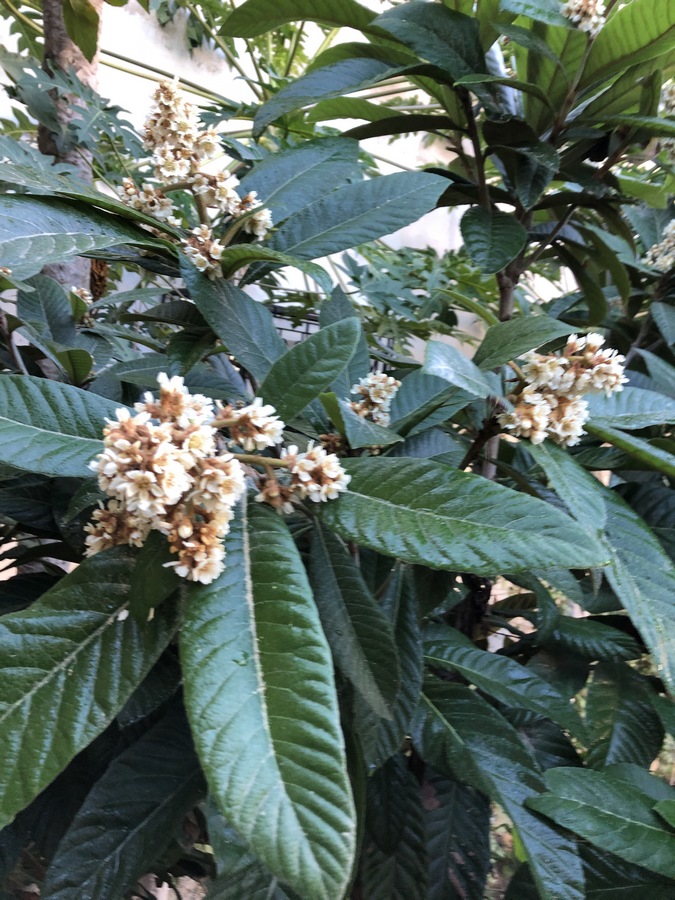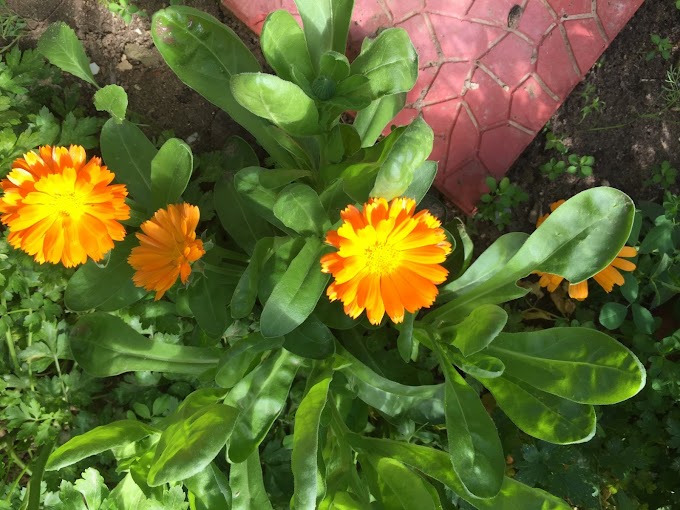Native to the subtropical regions of Asia, the loquat tree (Eriobotrya japonica) is not just a feast for the eyes but also a treasure trove of sensory experiences. With its glossy green leaves and clusters of creamy white blossoms, the loquat tree brings a touch of elegance to any garden. In this blog post, we’ll explore the enchanting world of loquat flowers, their unique characteristics, care tips, and why they deserve a special place in your garden.
The Allure of Loquat Flowers
Loquat flowers bloom in late fall, offering a stunning contrast to the changing foliage around them. Each flower is small yet striking, with five united petals that create a delicate cup shape. Their sweet fragrance wafts through the air, attracting bees and butterflies, making them not only beautiful but also beneficial for your garden’s ecosystem. 🌿🐝
The loquat tree itself can grow up to 30 feet tall, but it’s often pruned to maintain a manageable size for home gardens. Its leaves are leathery and dark green, providing an attractive backdrop for the flowers. As the blooms give way to fruit in spring, gardeners are rewarded not only with visual beauty, but also with delicious loquats that can be enjoyed fresh or used in various culinary delights.
The Unique Characteristics of Loquat Flowers
One of the most captivating aspects of loquat flowers is their structure. The flowers typically appear in clusters at the ends of branches, creating a stunning display that can brighten even the cloudiest days. Each flower features five petals that are often described as soft and velvety to the touch. This unique texture adds an extra layer of appeal to these already enchanting blooms.
The scent of loquat flowers is another standout feature. The fragrance is sweet and fruity, reminiscent of honey and ripe stone fruits. This aroma not only draws in pollinators but also creates a soothing atmosphere in your garden or outdoor space. Many gardeners find themselves enchanted by this scent, often taking time to pause and enjoy it during their daily routines.
Caring for Your Loquat Tree
If you’re inspired to add a loquat tree to your garden, here are some essential care tips:
Location: Choose a spot with full sun to partial shade. Loquats thrive in well-drained soil and prefer slightly acidic conditions. Planting them near walls or fences can provide additional warmth and protection.
Watering: While they are drought-tolerant once established, regular watering during dry spells will help promote healthy growth and flowering. Aim for deep watering sessions rather than frequent light watering to encourage deeper root development.
Pruning: Prune your loquat tree annually to maintain its shape and encourage more blooms. Remove any dead or crossing branches to improve airflow and reduce disease risk.
Fertilization: Use a balanced fertilizer in early spring to support healthy growth and flowering. Organic compost can also be beneficial for enriching the soil.
Pest Control: Keep an eye out for common pests like aphids and scale insects. Regular inspections and natural pest control methods—such as introducing beneficial insects like ladybugs—can help keep your tree healthy.
The Cultural Significance of Loquats
Beyond their beauty and utility in gardens, loquats hold cultural significance in various parts of the world. In Chinese culture, they symbolize good fortune and prosperity. The fruit is often used in traditional medicine for its health benefits, including soothing coughs and promoting digestion. This rich history adds another layer of appreciation for these lovely flowers.
In Japan, loquats are celebrated not only for their beauty but also for their delicious fruit, which is often used in desserts and preserves. The blossoms are also featured in traditional Japanese art and poetry, symbolizing renewal and hope.
Watch: Fall Garden Wonder: The Allure of Loquat Blossoms 🌸
Culinary Uses of Loquats
Once your loquat tree begins producing fruit in spring, you’ll have access to delicious loquats that can be enjoyed fresh or used in various culinary delights! The fruit has a sweet-tart flavor that makes it perfect for:
Jams and Jellies: Loquats can be cooked down with sugar to create flavorful jams that capture their unique taste.
Desserts: Use fresh loquats in pies, tarts, or crumbles for a delightful twist on traditional recipes.
Smoothies: Blend fresh loquats into smoothies for added sweetness and nutrition.
Salads: Toss sliced loquats into salads for a burst of flavor.
Sauces: Create savory sauces using cooked loquats paired with meats like chicken or pork.
Environmental Benefits
In addition to their aesthetic appeal, loquat trees offer several environmental benefits that make them an excellent choice for home gardens:
Pollinator Support: As mentioned earlier, loquat flowers attract bees and butterflies, which are essential for pollination not just within your garden but also within the larger ecosystem.
Erosion Control: The extensive root system of loquat trees helps prevent soil erosion on slopes or hilly areas.
Wildlife Habitat: The fruits provide food for birds and other wildlife during late spring when other food sources may be scarce.
Carbon Sequestration: Like all trees, loquats absorb carbon dioxide from the atmosphere, contributing positively to climate change mitigation efforts.
Conclusion: Celebrate the Beauty of Loquats
As we embrace the beauty of fall, let’s not overlook the enchanting loquat flowers that bloom during this season. Their delicate fragrance and charming appearance can brighten any garden, reminding us that beauty can be found even as nature prepares for winter’s rest. Whether you’re an experienced gardener or just starting out, consider adding a loquat tree to your landscape—it’s a decision you won’t regret!
Have you ever encountered loquat flowers in your garden or local area? Share your experiences in the comments below!
We’d love to hear how these delightful blooms have inspired you!
Want to read:
Like This: Pin it for Later!
FAQs About Loquat Flowers
What are loquat flowers?
Loquat flowers are small, creamy white blooms that grow on the loquat tree (Eriobotrya japonica), typically blooming in late fall.
When do loquat trees bloom?
Loquat trees usually bloom in late fall (October to November), producing fragrant flowers that attract pollinators.
How do I care for my loquat tree?
Ensure it gets full sun, water regularly during dry spells, prune annually for shape and health, and use balanced fertilizer in spring.
Can I grow loquats in containers?
Yes! Loquats can be grown in large containers; just make sure they have adequate drainage and enough space for root growth.
What do loquat flowers smell like?
Loquat flowers have a sweet, fruity fragrance that is particularly appealing to bees and other pollinators.
Are loquats edible?
Yes! The fruit produced by loquat trees is edible and can be eaten fresh or used in jams, jellies, and desserts.
Do loquats require special soil conditions?
Loquats prefer well-drained soil with slightly acidic pH levels but are adaptable to various soil types.
How tall do loquat trees grow?
Loquat trees can reach heights of up to 30 feet but are often pruned to maintain a smaller size for home gardens.
What pests affect loquat trees?
Common pests include aphids, scale insects, and spider mites; regular monitoring helps manage these issues effectively.
Can I propagate loquats from cuttings?
Yes! Loquats can be propagated from cuttings or seeds; however, growing from seeds may take longer for fruit production.
Feel free to share your thoughts or questions about loquats below! Happy gardening! 🌼💚
Affiliate Disclosure!
This website is a participant in the Amazon Services LLC Associates Program, an affiliate advertising program designed to provide a means for sites to earn advertising fees by advertising and linking to Amazon. Some of the links to products on this site are affiliate links. These are products that I've used or recommend based from homesteading experience. I do make a small commission (at no extra cost to you) from these sales. (alert-warning)
















